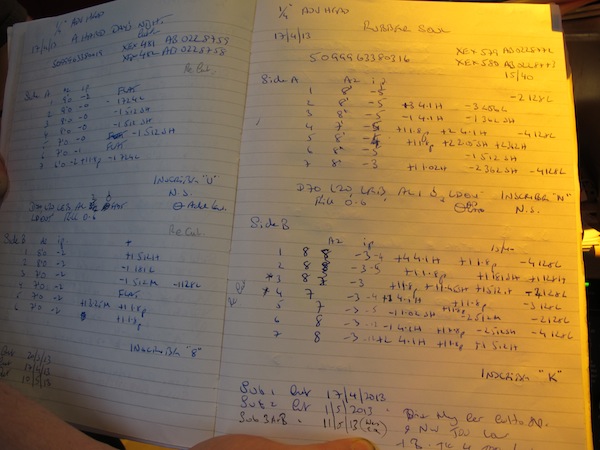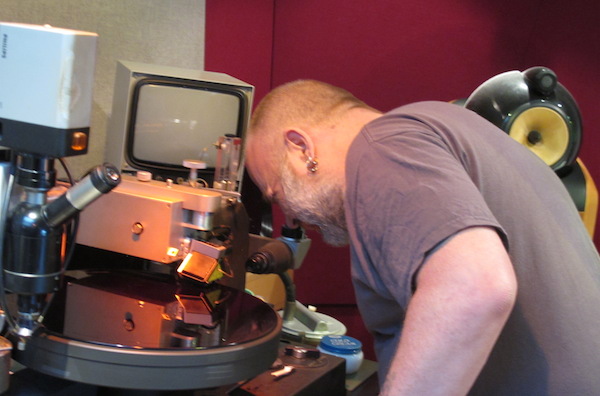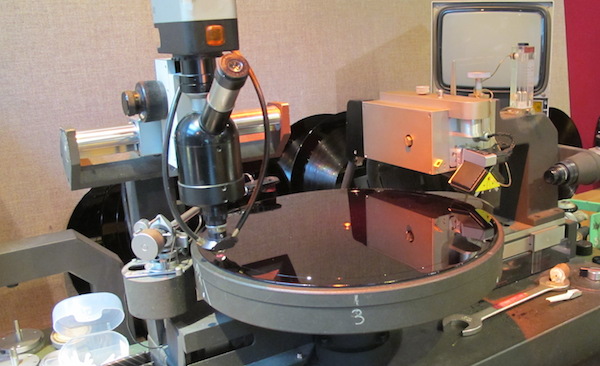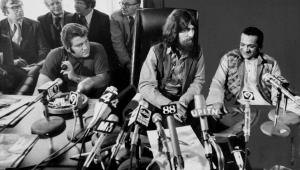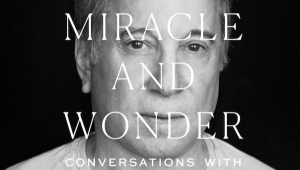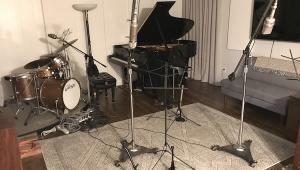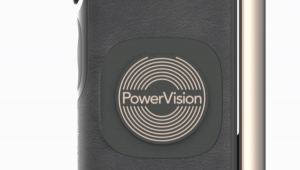It will probably be around for a awhile (at least the individual LPs). HOWEVER, if you really want them, I would buy earlier than later. Just look at great vinyl issues from the past ten years. Most sell out and then if you want it later, you pay big bucks.
The Beatles Get Back To Mono and AAA Vinyl Page 2
Producer Steve Berkowitz has a reliable, proven effective reissue and/or remix methodology: he begins by gathering and listening to original “1A” (in the case of Columbia reissues) pressings. Then after the tapes are digitized at 96/24 he compares the records and the files, adjusting EQ as necessary before again using the tapes to make a final digital master or to cut lacquers for an AAA release.
The mono Beatles tapes were in very good shape but still the goal was to play them as few times as possible so once they were retrieved from the special vault in which they are stored—in a separate secret location from the rest of EMI’s tape holdings and kept under security resembling the nuclear code the President of the United States would use to order a strike—each tape was played back on the mono headstock equipped Studer A80 deck in mastering engineer Sean Magee’s room (which itself is under electronic lock and video monitoring security) and recorded to digital at 96/24 resolution.
With these files on hand, Berkowitz and Magee set about comparing the digitized tapes to first pressings using an Ortofon 2M Black on a less than distinguished turntable through a Stanton MM phono preamp. Not “high end” but reliably flat in response. The B&W 802s were driven by Classe monoblocks. But before listening they set the EQ as close as possible to original recording and mastering engineer Norman Smith’s notes found in each tape box.
Of course a great deal has changed in the intervening decades. The tapes have aged, some for more than fifty years, the playback electronics are different as is the vastly improved quality and timbral characteristics of the monitor speakers.
Over time—quite a long time actually—Berkowitz and Magee listened to the records and to the “flat” 96/24 transfers and EQ’d, making only subtle but critical changes to the original settings, though they knew the resulting LPs would sound somewhat different than the originals, which were cut using a tube chain with a somewhat brighter, perhaps airier top end and softer far less well-defined bass. The originals may have been cut taking into account the relatively primitive playback gear owned by typical Beatles fans. Today there are no such limitations
This is a photo of Berkowitz’s EQ notes for Help! and Beatles For Sale:
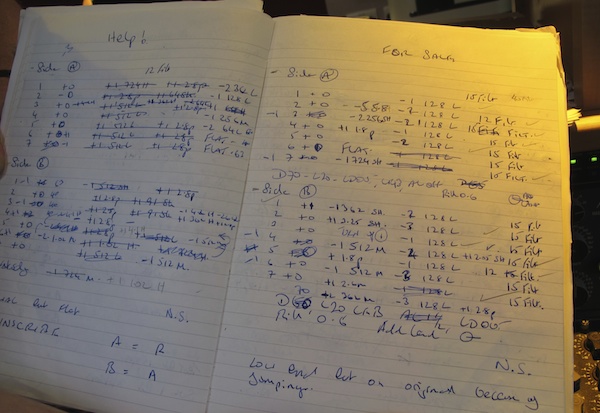
Because there is some controversy over the apparent "15kHz filt" at the end of each track of Beatles For Sale (and only for that album) and because we don't know if those are the original EQ notes or Berkowitz's, I have emailed him for clarification. I also now post here another photo of his EQ notes for two other albums where there are no such "15k filt" notes just to point out how ridiculous and inflammatory some posters can be.
This ongoing process took the good part of a year, with Berkowitz flying back and forth between New York and London. Finally it was time to cut lacquers, have them plated and pressed at Optimal and audition test pressings.
My visit was timed for near the end of the process, which worked out well for me since I was going to be in Munich anyway and I’d get to hear a double LP cut!
But First, A Visit to Studio Two
Walking into Abbey Road was a thrill, you can be sure. I was about to be ushered upstairs to where the mastering suites are located when I was told that the band that had booked Studio Two was going to be late so I could go in. So there it was, just as we’ve all seen in the photos. I started to walk in and got as far as being able to turn around and see those now iconic steps leading up to the control room. I took a deep breath and the musty air filled my lungs (the room is built over a swamp).
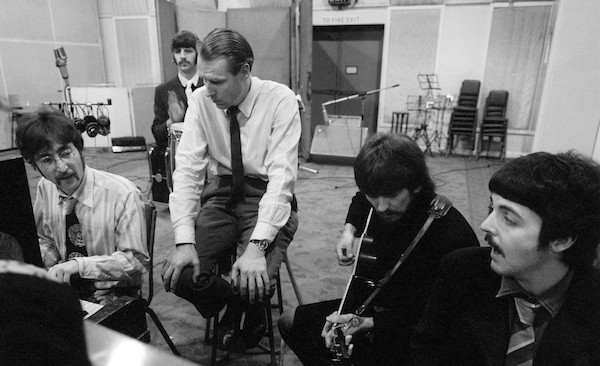
(The Beatles & George Martin—Jan 1967© Apple Corps Ltd.)
As I breathed in, fifty plus years of Beatles history as soundtrack to my life followed accompanied by “A Day In the Life”’s ending crescendo. It became too much! Here was my opportunity to walk around the room and see and feel it from every angle as “The Boys” did. I could have stood where they stood in various places throughout the room. We’ve all seen the pictures, but I couldn’t move! It was like a bad dream. I was overcome. And then when I figured I could move, I didn’t want to. I didn’t want to visit the mundane reality that it was just a room. It was better to leave much of it to the imagination. After all, I’d gotten inside when originally I was not going to be able to, so that was good enough. I stepped partially inside, looked around and then exited wobbly.
No pictures were allowed in Studio Two at that time so the best I can do is show you a view of the roof from Magee’s mastering suite:
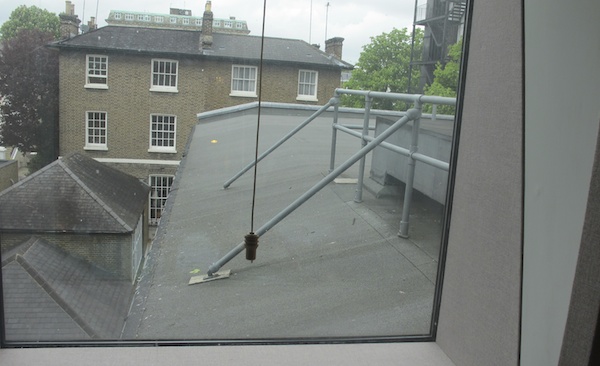
Before going upstairs we went downstairs to visit Lester, the keeper of the microphones. I wasn’t allowed to record sound but Lester was every bit the character he appears to be in the photo. He showed me John’s favorite microphone.
After a quick tour of Sean’s mastering room we left for lunch with George Martin’s son Giles who did such a great job remixing tracks for the Cirque de Soleil “Love” show still playing in Las Vegas at The Mirage. No Beatles fan should miss it. Giles told me he mixed to analog tape, which of course was a more difficult route, but yielded better sound.
Then it was back to Sean’s room for the main event: The Beatles playback and four lacquer cuts. With all of the hard work listening out of the way, the tapes were put up on the A80 one side at a time, the EQ controls were set according to Berkowitz’s extensive notes and the lacquers were cut.
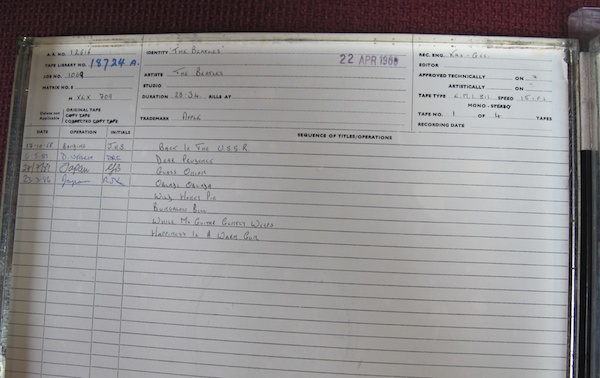
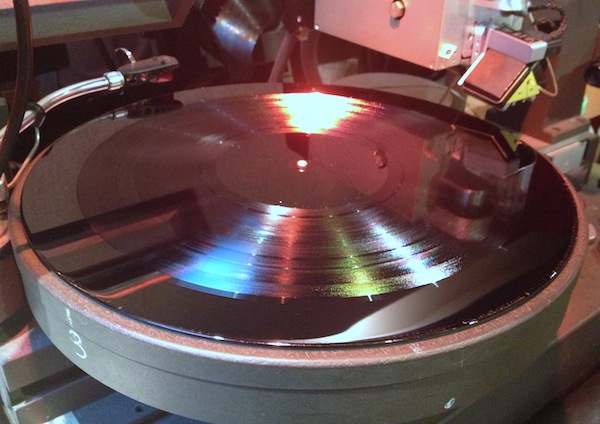
So how did the master tapes sound? Playback levels were not as high as I like for listening pleasure and of my system sounds better (sorry, but true). However, there’s nothing like listening to a master tape especially an iconic Beatles album master tape!
A few months later Berkowitz and mastering engineer Greg Calbi visited with a few sides of a The Beatles test pressing that we compared to an original UK Apple “top loader”. So how did it sound? That will have to wait for a full review of the box set because I have no idea if that test pressing “made the grade” but judging by what I heard that evening “A splendid time is guaranteed for all!”.
- Log in or register to post comments


both Mono and stereo CDs and the stereo LPs still available? And at a cheaper price? I know the mono CD box sold out quickly the first go around but the second issue is still around.

the CD box sets won't be of much value and the stereo LP box set was a disaster so it obviously won't be valuable. But if these are done as well as I think they will be they may sell out relatively fast and become pretty valuable

This fantastic news to say the least. Now to set up for Mono (though I have been enjoying my current mono releases as is). Question is where does the Y adapter go? I don't have a mono switch on my Marantz AV550 preamp. In addition, I use a Carver AV806 amp and Jasmine phono pre for my VPI Traveler w/Grado Gold. The Jasmine does have inputs for 2 turntables but that would be a route I can't go for right now.
I can order the Y adapter from Blue Jeans in time for the box set!!! Just need to know how to hook it up.

Hi Folks: I know this is an ODD question, but: does anybody out there have the Book from the Stereo Vinyl box set that they would be willing to sell for a reasonable / fair price? I got "stiffed" so to speak on a 'used' copy of the set (no wonder it was so cheap!). Thanks.
( I Hope it's okay to say that you can contact me at: dailyville@sonic.net

My apologies, but I went back through and couldn't find the answer to this. In what direction does the "Y" adapter get connected? Are you combining the left and right channels from the pre-amp into one channel feeding the amp, thereby listing to only one speaker? Or are you taking only one channel from the pre-amp and feeding it to both channels of the amp? I have a Benz LPs on a Graham Phantom II Supreme and I'm loathe, (hey I used that word in a sentence!)to spend more money on a mono cartridge for one set of mono records.

What I remember from the stereo LP remasters is controversy and assertions from EMI that Apple or the surviving Beatles (and families) would only approve what was done (i.e. using the 2008/9 digital files).
Nice to see that a bit of constructive criticism spearheaded online reveals that not only are masters previously thought to be infinitely precious/unavailable/unusable actually available, but that they'd spend a buck or two going through the entire analog process to give us what we what.
Bravo!

A great and unique story. I'm not sure if I will get the whole box (probably will though), because I have all the UK originals, but I'm sure to add the mono masters album.
One question. Since they're mono presses, should I play them with my Lyra Helikon Mono or With my Shelter 901 MKIII (stereo)?
I read somewhere that records cut after about 1968 are cut with a stereo stylus, regardless of whether they're stereo or mono.

The SX74, being a stereo cutter head, does have two coils but we'd imagine only the lateral cut is being done since the records are mono.
The groove depth probably won't necessarily be the same as a vintage record's but I doubt your line-contact stylus will care about that.

Leader tape in between tracks is a clear indicator of original album master tapes. Doesn't look like these masters have leader tape separating each track, so could this mean they used safety copies to cut the new LP's?


Personally I liked but was never knocked out by any Beatles mono, save for Pepper and a few other mixes. However with due respect to all of my mono/vinyl friends, I do hope this mono set meets their expectations. Got my fingers crossed!!

The box I would purchase would be Please Please Me through Rubber
Soul in MONO -Revolver -Sgt. Pepper-Magical Mystery Tour-The
White Album-Let It Be-Abbey Road- in Stereo!
All from the original analog mix down masters. Pressed at one of
the known best pressing plants somewhere in Germany.(180-200gm)
That would really be something!!!!!!!!!!!!!!

Regarding the questions about whether a mono cartridge is required or advisable for these reissues, there was a very interesting feature in this month's edition of Uk magazine HiFi World.
Editor Noel Keywood has apparently been the instigator for Ortofons new 'Special Edition' 2M Mono cartridge.
The new cartridge differs from the previous 'standard' 2M mono cartridge in having a 6um Shibata stylus instead of a 18um spherical stylus.
Apparently OLD i.e. original, 'back in the day', mono pressings had bigger grooves for which the larger 18um styli are optimal. The new Beatles mono pressings (and presumably other 'modern' mono repressings) are optimized for (mono) replay using standard modern stereo cartridges which have smaller styli. So the new Beatles mono pressings will have smaller grooves.
In Keywood's opinion playing the new mono pressings with a mono cartridge fitted with 18um spherical stylus will be highly sub-optimal (resulting in severe reduction in hi frequency response) and highly likely to result in actual DAMAGE to the records.
Hence the new 2M mono SE with Shibata stylus.
Playing with standard stereo cartridge will be absolutely fine and is actually advisable to using a cart optimized for OLD mono records.
AFAIK the only downside to using a standard stereo cart over say the new Ortofon would be possible increased surface noise, but as these are new (hi-standard) pressings that should not be a big issue.
(I hope readers can excuse my lack of technical precision here! I'm recalling from memory, but the gist of this is perfectly correct. I advise readers to source a copy of the magazine if they want to know more)

Can this new set achieve the Wow factor? What I mean, is it possible for this set to deliver substantial higher fidelity over what we've heard before or will we just notice minor or subtle improvements? To be honest, when the Beatles first came out (yea, I was there eating it all up as it happened in College Point N.Y.)I would have been happy listening to them on an Edison Cylinder (even though I'm was born a stereo guy). Were the guys over at Abbey Road really able to squeeze more out of those 50 year old tapes? Fingers crossed....

Oh, bye the way..since these new mono lp covers are supposed to be exact replicas of the originals, outside of the bar code on single releases, how do we differentiate between them and original first pressings.

Yes, duplicating the non-linearity of the contemporary typesetting processes, which characterise the text elements of the labels of the original pressings would never have been considered practical.
The UK '81 Mono vinyl reissues included the text 'MONO' above the (approx.) 'PHONE' of the yellow PARLOPHONE text, and placed where 'STEREO' appeared on the STEREO Apple labels. Is this also a 'feature' of the new labels?

Up until a Beatles fanatic fellow-musician friend of mine said the other day how amazing the Beatles albums in mono were, I wouldn't have been SLIGHTLY interested - though I was bemused at how much more expensive the mono box set actually is...
I've just started collecting LPs after a 30-or-so-year hiatus and am starting to rebuild my collection. So far I've got about 80, comprising good second hand original pressings of some of my favourite albums, and a good many brand new reissues, bought (for the most part) because of recommendations and reviews I've read on other forums.
Most ridiculous thing about this is that I'm yet to buy a turntable....
I'm LOVING this forum though, having just stumbled upon it a few hours ago. The discourse is mostly intelligent, good-natured and fascinating for someone rediscovering the joys of vinyl after so many years. I especially appreciate Mike's clearly authoritative yet open-minded comments regarding the topics.
Given that the Beatles must comprise part of any comprehensive collection, I've already invested in the latest pressings of both Abbey Road and the White Album, as the consensus seems to be pretty positive re- the latest vinyl reissues in both cases, save a few dissenting opinions. I was VERY interested in the latest stereo vinyl box until I read the comments here...
Aaaaanyway... my question now is whether it would make more sense for me to continue accumulating the stereo Beatles records I want on a piecemeal basis, whilst forking out for the mono set...
Thoughts?
Anyway

I really don't think this project is going to be "pure analog" as they say. They're most likely going to use digital delay lines for monitoring, equalizing, and level adjustment when they do the cutting which basically makes it digital at that point. I highly doubt they're going to do it the old fashioned way by mounting a preview head on the mastering deck. It's just way too expensive and much much more difficult and prone to costly mistakes.
I won't believe it until I get a confirmation from an actual representative for the project.

Pure analog in today's world? By that definition, Abbey Road would have to use gas generators for the electricity. For me, if these new L.P.'s blow away all previous mono releases, it won't mean a hill of beans what, and how much of what format works it's way into the chain!

Dear Mike,
It seems like the parties have gone to great lengths to create a record that is true to the original mono releases of these records. If that is so, why not just use the stampers from those original releases?

Do you know if they will be releasing the mono LP's individually just as they did with the 2009 Stereo re-masters?

Thats ok as I have top loaders of both the stereo and mono White album. It will be interesting to find out how these 2014 lp's compare with the 1982 Japanese EAS mono red vinyl

Wow, what an experience that must have been at Abbey Road.
Thanks for sharing it with everyone. I also commend you for being able to keep it quiet for a year!
I was curious if you might know...
- Is the white album numbered? or the box set itself numbered?
- what do the record labels look like? Old school Parlophone for PPM? What about MMT? Capitol colorband?
Thanks so much!
- Dave

Oops - saw you just answered the numbered Beatles White Album. Thanks for that answer!

Will be interesting to see what the 'early numbers' will go for when they ultimately make their way onto online auction sites.

I've put hesitation behind me and ordered the boxset. Despite hailing from Australia, it's still approx $100 cheaper (shipping inclusive) to import the set from the U.S. rather than purchase locally. Odds-bodkins perhaps but for such a saving, I'm happy to wait the extra week for delivery.
I have greatly enjoyed reading the article and all the comments of all respondents. And although I got a bit lost in the hyper-technobabble, it has been a very entertaining late afternoon.
Thank-you to all.

If I could have Beatles in stereo, I would definitely prefer it. But the fact is that we only have the Beatles in mono. The so-called stereo mixes have nothing to do with stereo. They are mono, distributed between left and right. To talk of stereo, you must have two seperately recorded channels of each and every sound. When Beatles recorded, there was one channel only for each voice and each instrument. The 'stereo' mixes of Beatles produce an artificial sound, a poor, chopped-up mono sound, which I have always found annoying, simply removing the experience of a band playing in one room.

Hi Mike, Can you help me with making sure I can get the best experience from the Beatles MONO VINYL? I have a Technics 1700MKII - Grado's stereo cartridges - B&K Amp ST3030 and Pre-amp PRO10 (MONO SIWTHC) and Carver AL III Speakers. With that said, I would like to get the best sound when listening to these Beatles Mono Vinyl. Would a mono Cartridge make a difference? Do I need to get the OROFON special Cartridge or would a Grado be sufficient. I have the MOBILE FIDELITY Vinyl I bought new in '78 and always thought they were the best sounding. I have the Mobile Fidelity UHQ Vinyl Sgt Pepper too. Your recommendation would be most appreciated! And I envy you at ABBEY ROAD! Awesome! Thanks Art

I too need advice, please!
Apart of my regular stereo analog system, I'm putting together a mono vinyl replay system for this remasters. The turntable is an old modified Thorens (unidentified model) with Rega RB300 arm. I will be using an Audiolab 8000A as phono preamp plugged into my Audio Research Reference 3 through its pre outputs.
The only thing I need to buy now is the cartridge, and the choice doubt is between this Ortofon 2M Special Edition or the cheaper Ortofon OM D 25 MONO. I have a lot more mono records (Jazz mainly), but is this remaster that I want to enjoy fully.
Any advice???
Thanks a lot!
Peter
